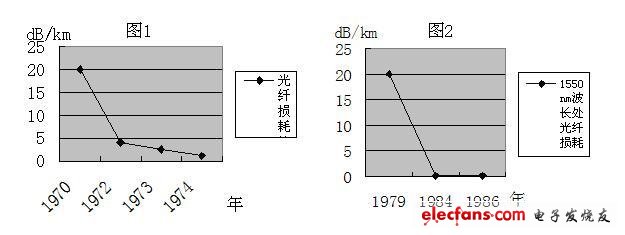Light is everywhere. In the early days of human development, humans have begun to use light to transmit information. But the volume of information transmitted at that time was very small, and the limitations were also great. With the development of society, the amount of information transmission and exchange is increasing day by day, and the traditional electrical communication method can no longer meet people's needs. In order to expand the communication capacity, the communication method has developed from medium wave and short wave to microwave and millimeter wave. This is actually to increase the communication capacity by increasing the communication carrier frequency. In this way, the current optical communication technology appears, which is optical fiber communication. Optical fiber communication is a communication method that modulates signals such as images and data to be transmitted onto an optical carrier and uses optical fiber as a transmission medium. Compared with traditional electrical communication, optical fiber communication uses high frequency light waves as carrier waves and optical fiber as the transmission medium. Since optical fiber communication has the advantages of low loss, transmission frequency bandwidth, large capacity, small size, light weight, anti-electromagnetic interference, and not easy to crosstalk, etc., it has been favored by people in the industry since its emergence and has developed very rapidly. The transmission capacity of the optical fiber communication system has increased by nearly 10,000 times since 1980 and the transmission speed has increased by approximately 100 times in the past 10 years. Optical Fiber Development and Application In order to develop optical communication technology, people have considered and tried various transmission media, but their losses are very high. It was not until 1966 that Chinese-American Dr. Gao Kun and Hawkham published papers, foreseeing that low-loss optical fibers can be used for communication, knocking on the door of optical fiber communication. Since then, the application of optical fiber in communications has attracted people's attention. Soon in August 1970, Corning Corporation of the United States successfully developed a fiber with a loss of 20 dB / kM for the first time. The era of optical fiber communication began. In 1972, with the continuous improvement of raw material purification, rod making and wire drawing technology in the fiber preparation process, the attenuation coefficient of gradient index multimode fiber was reduced to 4dB / km. In 1973, the fiber loss developed by Bell Laboratories of the United States was reduced to 2.5dB / km. It dropped to 1.1dB / km in 1974. In 1976, Japan Telegraph and Telephone (NTT) and other units reduced fiber loss to 0.47dB / km (wavelength 1.2). In the next 10 years, the fiber loss at the 1.55 wavelength has dropped dramatically. (As shown in the figure): 20dB / km in 1979, 0.157dB / km in 1984, and 0.154dB / km in 1986, which is close to the theoretical limit of the minimum loss of optical fiber. image The development of optical fiber communication depends on the progress of optical fiber communication technology. At present, optical fiber communication technology has made great progress. New technologies are constantly emerging to greatly improve the communication capabilities, and continue to expand the scope of application of optical fiber communications.
Zysen provides a range of waveguide fixed attenuators that operate from WR10 to WR650. They are available in multiple attenuation configurations 3 dB, 6 dB, 10 dB, 20 dB, 30 dB. These attenuators can handle an average power from 2 to 100 W. They are available with choke flange, cover flange, and grooved flange and are RoHS compliant.
Variable Rf Attenuator,Waveguide Fixed Attenuator,Fixed Attenuator In Microwave,Fixed And Variable Attenuator In Microwave Chengdu Zysen Technology Co., Ltd. , https://www.zysenmw.com